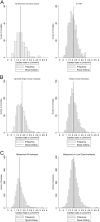Potential impact of a shock requirement on adult heart allocation
- PMID: 28579114
- PMCID: PMC6060413
- DOI: 10.1016/j.healun.2017.05.015
Potential impact of a shock requirement on adult heart allocation
Conflict of interest statement
None of the authors has a financial relationship with a commercial entity that has an interest in the subject of the presented manuscript or other conflicts of interest to disclose.
Figures


References
-
- Organ Procurement and Transplantation Network. Modify adult heart allocation 2016 2nd round. Available at: https://optn.transplant.hrsa.gov/governance/public-comment/modify-adult-.... Accessed December 15, 2016.
-
- Colvin M, Bolch C, Pyke J, Skeans M, Wang X, Zeglin J. Analysis report: data request from the Heart Subcommittee of the OPTN Thoracic Organ Transplantation Committee. 2015 Oct; Data Request ID: HR2015_01.\.
-
- Singh TP, Almond CS, Taylor DO, Graham DA. Decline in heart transplant wait list mortality in the United States following broader regional sharing of donor hearts. Circ Heart Fail. 2012;5:249–58. - PubMed
-
- Narang N, Thibodeau JT, Levine BD, et al. Inaccuracy of estimated resting oxygen uptake in the clinical setting. Circulation. 2014;129:203–10. - PubMed
-
- Balik M, Pachl J, Hendl J, Martin B, Jan P, Jan H. Effect of the degree of tricuspid regurgitation on cardiac output measurements by thermodilution. Intensive Care Med. 2002;28:1117–21. - PubMed
Publication types
MeSH terms
Grants and funding
LinkOut - more resources
Full Text Sources
Other Literature Sources
Medical

